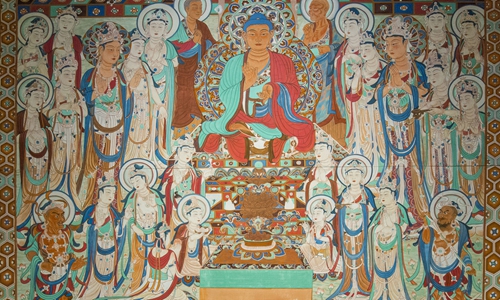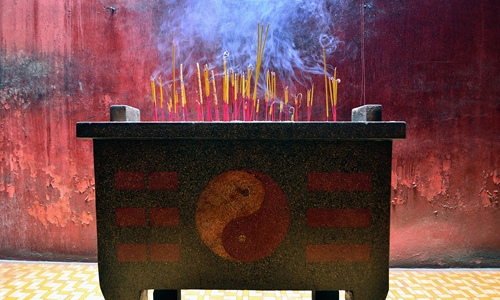HOME >> ARTS
Chinese netizens turn to prayer in the fight against novel coronavirus
By Ji Yuqiao Source:Global Times Published: 2020/2/13 20:43:41

A wall painting about Buddha Photo: VCG

A censer of Taoism Photo: VCG
Amid the ongoing epidemic of novel coronavirus pneumonia (NCP), Chinese netizens have turned to various means, including Taoist and Buddhist rituals to pray at home for the end of the deadly epidemic.
One netizen posted on social media that he has been chanting Taoist scriptures every day while staying at home since January 31 to pray for the elimination of the epidemic.
"I need to chant this scripture 81 times according to this Taoist ritual. The first 80 times nothing unusual happened, but yesterday when I kneeled to chant the doctrine for the last time, I suddenly saw that three sticks of incense that began to burn at the same time were all different lengths," the netizen wrote.
Taoism, also known as Daoism, is a philosophical or religious tradition of Chinese origin which emphasizes living in harmony with nature and has had a profound influence on Chinese culture over the course of the centuries.
When believers chant during a Taoist ritual, they usually burn three sticks of incense that are placed in censers. A Taoist classic named Xiang Pu explains what the different lengths that occur after burning mean .
The netizen said that after he finished chanting, he discovered the left incense was the shortest, while the right was the longest. He looked up the classic and found the corresponding explanation.
"Xiang Pu said this is an auspicious sign, which means the gods are blessing us. As a Taoist follower, I want to share this good news with you and hope the virus can be eliminated as soon as possible," he added.
Other netizens appreciated his message.
"You are so kind. Although I am not follower of Taoism, I can feel your kindness and also hope the epidemic can be defeated soon," one netizen commented.
Some Chinese people have also been turning to Buddhist rituals.
"My mom prays to Bhaisajyaguru at home. Every morning, she prays to the Buddha for the health of my family and the elimination of the epidemic," a 26-year-old Beijing white-collar worker, whose hometown is in Northwest China's Xinjiang Uygur Autonomous Region, told the Global Times on Thursday.
Bhaisajyaguru, commonly referred to as the "Medicine Buddha," is the Buddha of healing and medicine. The Buddha is described as a doctor who cures sufferings using the medicine of his teachings.
The image of the great Buddhist doctor in frescoes at the famous Mogao Grottoes in Dunhuang, Northwest China's Gansu Province shows the deity holding a bowl or a tin rod, according to a report from Chinese news outlet the Paper.
A mural from the Tang Dynasty (618-907) even depicts pills in the bowl that is held in the left hand of the medicine Buddha, who is seen wearing a red cassock over his shoulders.
Wang, 72, a resident of a county in North China's Shanxi Province, told the Global Times that she prays to the Medicine Buddha on the balcony.
"I cannot fight the virus with those young people and our medical experts, so I pray to the Buddha every day for their health and for our country."
Posted in: WHAT’S ON